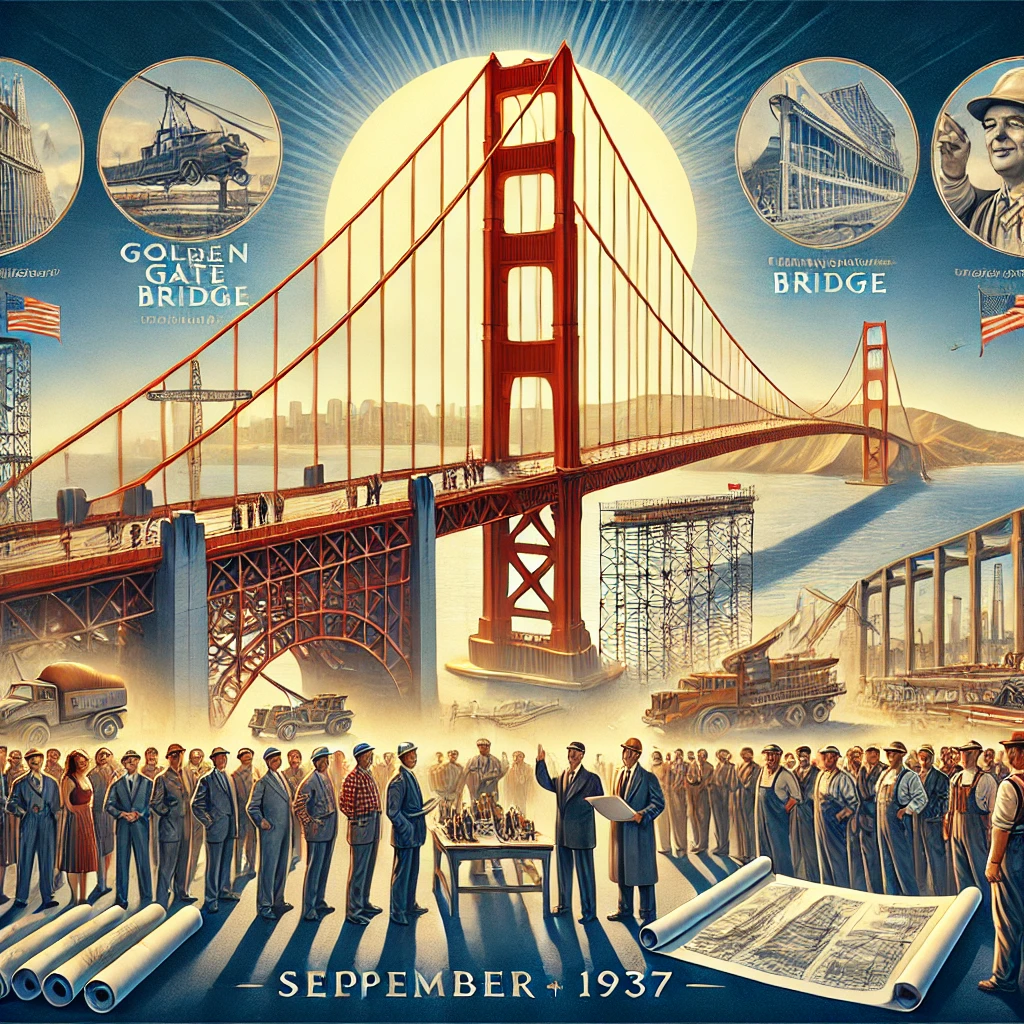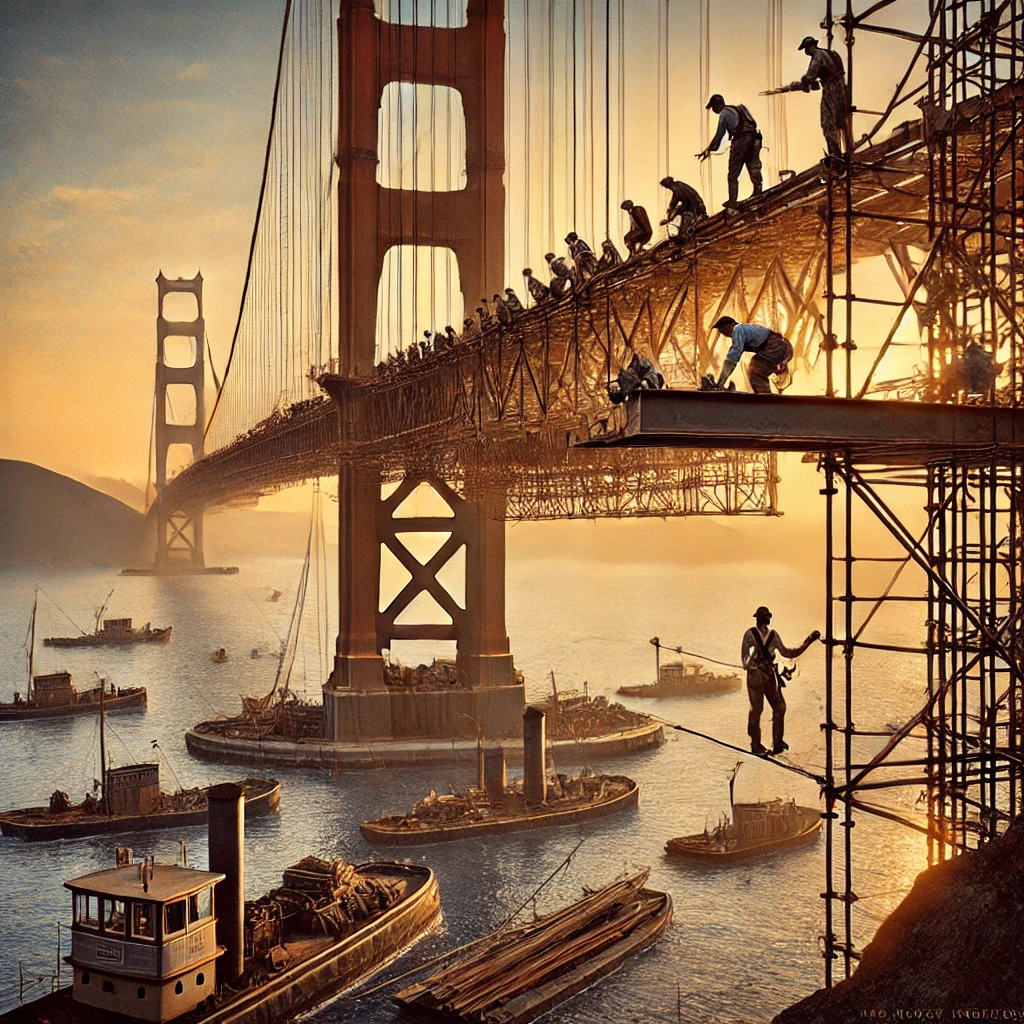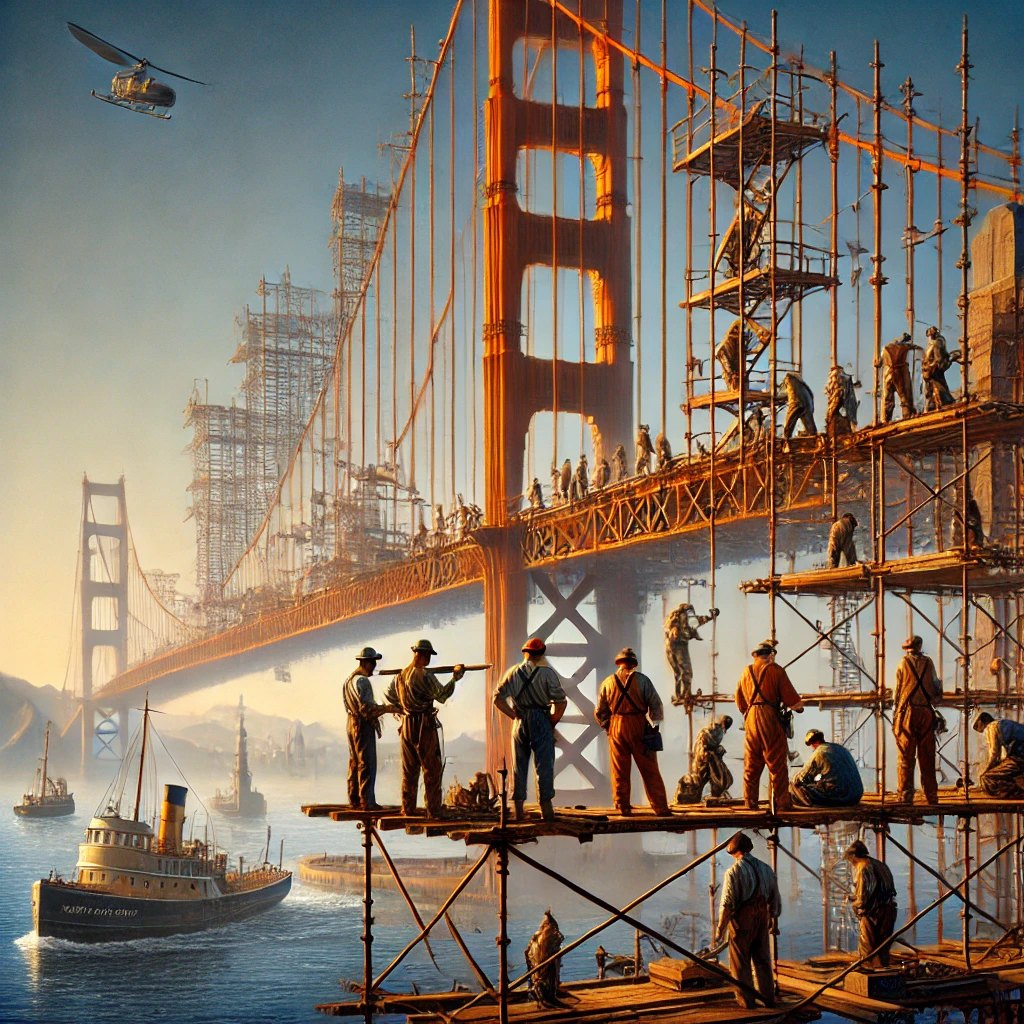On January 5th, 1933, construction officially began on what would become one of the most iconic landmarks in the world: the Golden Gate Bridge. Situated in San Francisco, California, the bridge’s striking art deco design and innovative engineering would forever change the skyline of the Bay Area. Despite facing numerous challenges, including financial struggles and skepticism about its feasibility, the Golden Gate Bridge was completed in 1937 and quickly became a symbol of American ingenuity and resilience.

The Vision Behind the Bridge
The idea for the Golden Gate Bridge was first proposed by Joseph Strauss, a bridge engineer who envisioned a suspension bridge connecting San Francisco to Marin County across the Golden Gate Strait. At the time, the only way to travel between the two areas was by ferry, which was slow and unreliable. Strauss’ idea was initially met with skepticism, with many doubting the ability to build such a large suspension bridge due to the area’s unique and challenging geography.
The Golden Gate Strait is known for its strong currents, high winds, and fog, all of which posed potential hazards to bridge construction. Additionally, the cost of the project was another major obstacle, as the Great Depression was at its peak, and securing funding seemed nearly impossible. Despite these hurdles, Strauss was able to rally support from local and federal officials, and with the backing of key investors, the project was given the green light.

The Engineering Feat of the Golden Gate Bridge
Construction of the Golden Gate Bridge was an ambitious undertaking, involving thousands of workers and cutting-edge engineering techniques. The bridge was designed by consulting engineer Leon Moisseiff and architect Irving Morrow, who incorporated the Art Deco style into the structure’s aesthetic. The choice of a bold, orange-red color for the bridge, known as “International Orange,” was both practical and artistic, as it ensured visibility in San Francisco’s frequent fog while also complementing the natural surroundings.
The engineering feat of building the bridge across the Golden Gate Strait was a remarkable achievement. The bridge’s main span, at 4,200 feet, was the longest suspension span in the world when it was completed. Workers faced numerous challenges, including the dangerous nature of the site, the constant threat of earthquakes, and the innovative need to create towers that could withstand the harsh conditions of the bay. Despite these risks, the project remained on schedule, and the bridge’s construction became a testament to the skill and determination of its builders.
The Lasting Impact of the Golden Gate Bridge
The Golden Gate Bridge, which opened to traffic on May 27, 1937, quickly became not just a functional transportation route but a symbol of the city of San Francisco and the United States. Its distinctive design and bold color made it an immediately recognizable structure, attracting visitors from around the world and becoming a focal point in both American engineering and popular culture.

The Golden Gate Bridge also had a profound economic impact on the Bay Area, helping to facilitate the growth of the region by improving transportation between San Francisco and Marin County. The bridge made commuting easier and spurred development in areas that were previously isolated due to the difficulty of crossing the bay. Today, the bridge stands as a symbol of innovation and resilience, not only representing the city of San Francisco but also embodying the spirit of American ingenuity.
The construction of the Golden Gate Bridge, which began on January 5th, 1933, remains one of the most significant engineering achievements of the 20th century. Despite facing numerous challenges, from financial constraints to the region’s harsh environmental conditions, the bridge was completed in 1937 and became an enduring symbol of the resilience and creativity of its builders. Today, the Golden Gate Bridge continues to inspire awe and admiration, serving as an iconic landmark and testament to the possibilities of human engineering.
